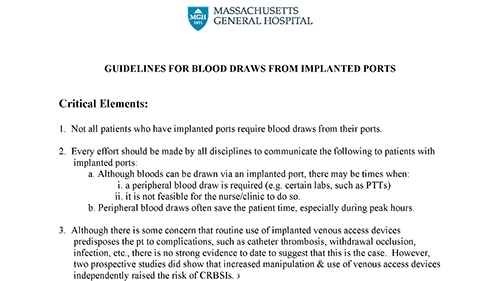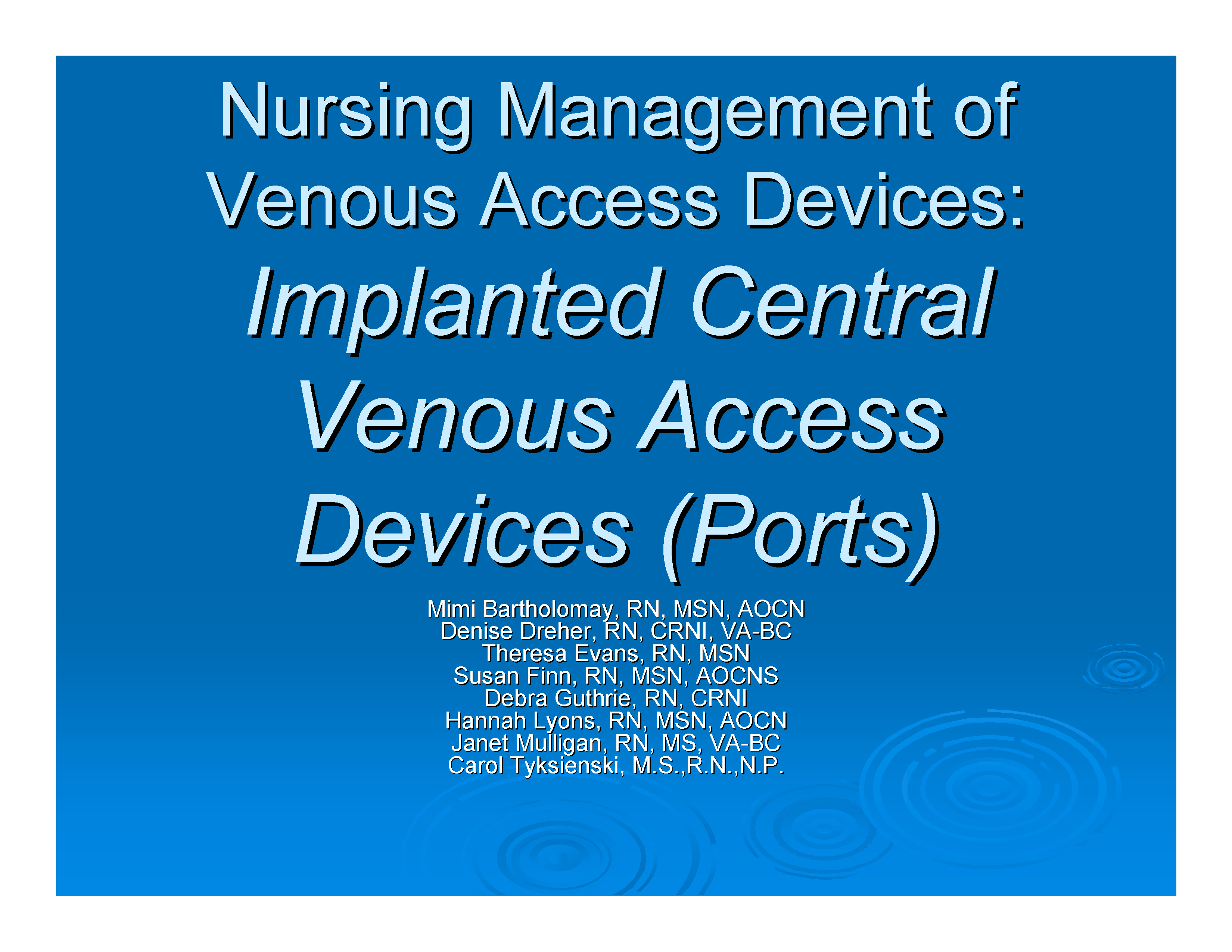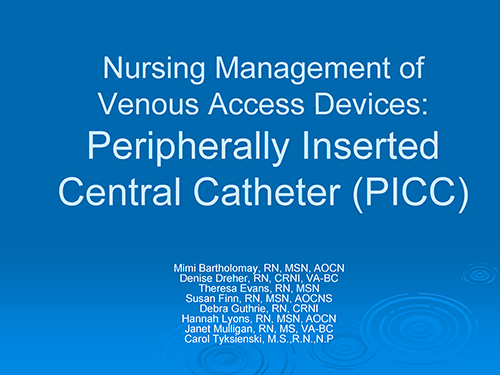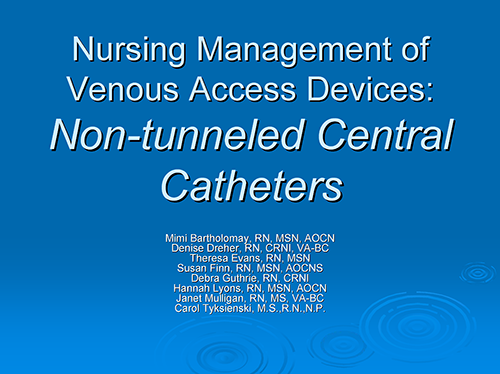Central Lines
preventing hospital-acquired infections
Central Line Toolkit
Types of Central Venous Catheters
Implanted Ports



PICC

Pink PICC line wrist bands
The PICC wrist bands have limited information on them: the type of catheter, length and number of lumens. The IV Team sees the pink bracelets as a better identifier of patients with PICC lines and will help prevent blood pressures and blood draws from being done on that extremity.
PICC Line Dressing Change
with BIOPATCH®
To provide ongoing suppression of bacterial growth on the area of the skin around an intravascular catheter insertion site, helping to reduce the risk of bacteria entering the blood stream causing an infection.
View ManualPICC line Removal
& Checklist
Peripherally Inserted Central and Midline Catheters should be removed for an unresolved complication, discontinuation of infusion therapy, or when deemed no longer necessary for the plan of care.
View ManualStatLock PICC Plus
Securement Device
StatLocks are used routinely on PICCs and Midlines. They are used to preserve the integrity of the access device, reduce risk of infection, minimize catheter movement at the hub (telescoping), and prevent catheter dislodgment and loss of access.
View ManualPeripherally Inserted Central
Catheter (PICC) Care &
Maintenance - Guidelines
for PICC lines
To provide guidelines for the nursing care related to the insertion and removal of PICCs, as well as the maintenance and on-going care of PICCs in the neonatal population.
View Manual
PICC Teaching module
Nursing Management of Venous Access Devices: Peripherally Inserted Central Catheter (PICC)
View ModuleNon-tunneled Central Venous Catheters

Non-tunneled Central
Catheter Teaching Module
Nursing Management of Venous Access Devices: Non-tunneled Central Catheters
View ModuleTunneled Central Venous Catheters
Subcutaneous Tunneled
Central Venus Catheter
Overview
Central venous access devices fall under three categories: nontunneled catheters, tunneled catheters, and implanted ports. This section will provide introductory information about the tunneled central venous catheter.
Open Overview










